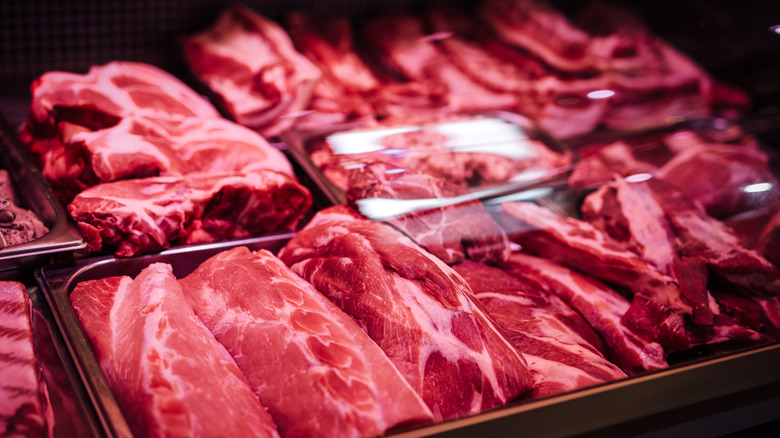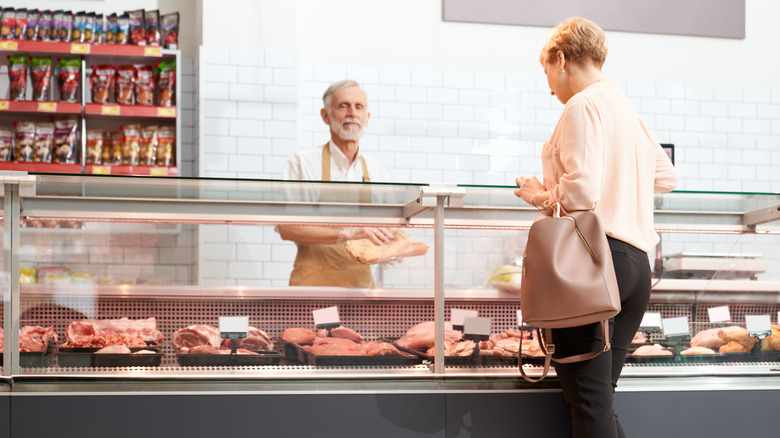How Do Supermarket Butchers Keep The Displayed Meat Fresh?
As you browse the meat section of your grocery store, you wonder how long some of the packaged and displayed ones have been sitting there. You may want the freshest cuts, perhaps even those sliced at the on-site butcher. There's a valid reason to want freshness in your meats. The CDC shares that 48 million people are infected, and 128,000 are hospitalized yearly in the U.S. due to foodborne illness. Many cases stem from meat-related exposures, including E.coli and salmonella-related risks.
How do you know what you're buying, then? More specifically, you may wonder how the grocery store can keep all that meat fresh for a long time when you cannot keep the same types of products in your refrigerator for more than a few days without worrying they will go bad.
You may not know that supermarket butchers have several key ways to reduce the risk of developing pathogens and other foodborne illnesses in their products. By taking those preventative steps, they can keep you safe and their profit margins in line with expectations. Knowing how to tell if meat is spoiled is always a priority for consumers, but quality supermarket butchers do their part to keep you safe.
Supermarket butchers keep an eye on the temperature and sanitize regularly
Good control over the meat as it's being prepared and ongoing sanitation can help keep it fresh longer. For example, refrigeration is a vital component of the process, so most butchers monitor cooler temps very closely at various times during the day. They're also recorded and tracked by the health department in many areas.
Not only are they monitoring the meat's temperature, but also the way it's handled throughout the time it's behind the counter. Each type of meat has its own cutting boards, saws, and grinders, to prevent cross-contamination between products. They also keep everything sanitized, following strict steps throughout the day, which helps keep the pathogens at bay. Good food safety tips like this reduce critical risks associated with foodborne illness development.
Next, they know that the more contact people have with the meat, the higher the risk of contamination and early breakdown. That's why they limit that as much as possible and only cut custom cuts when it's a request from the customer. Another example is that they don't display all of the cuts of meat they can provide. With less on display, there's less risk of cross-contamination occurring. Each step helps keep meat fresh longer, keeping it looking pink and juicy, so you'll purchase it.

